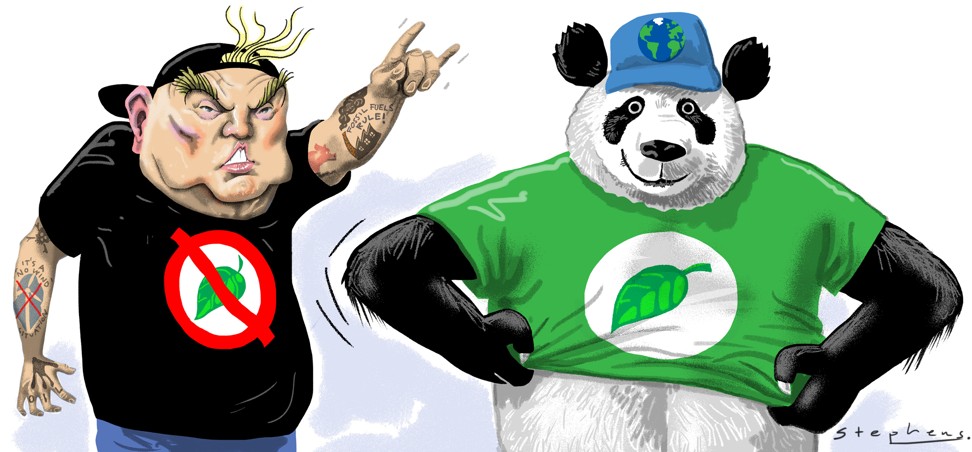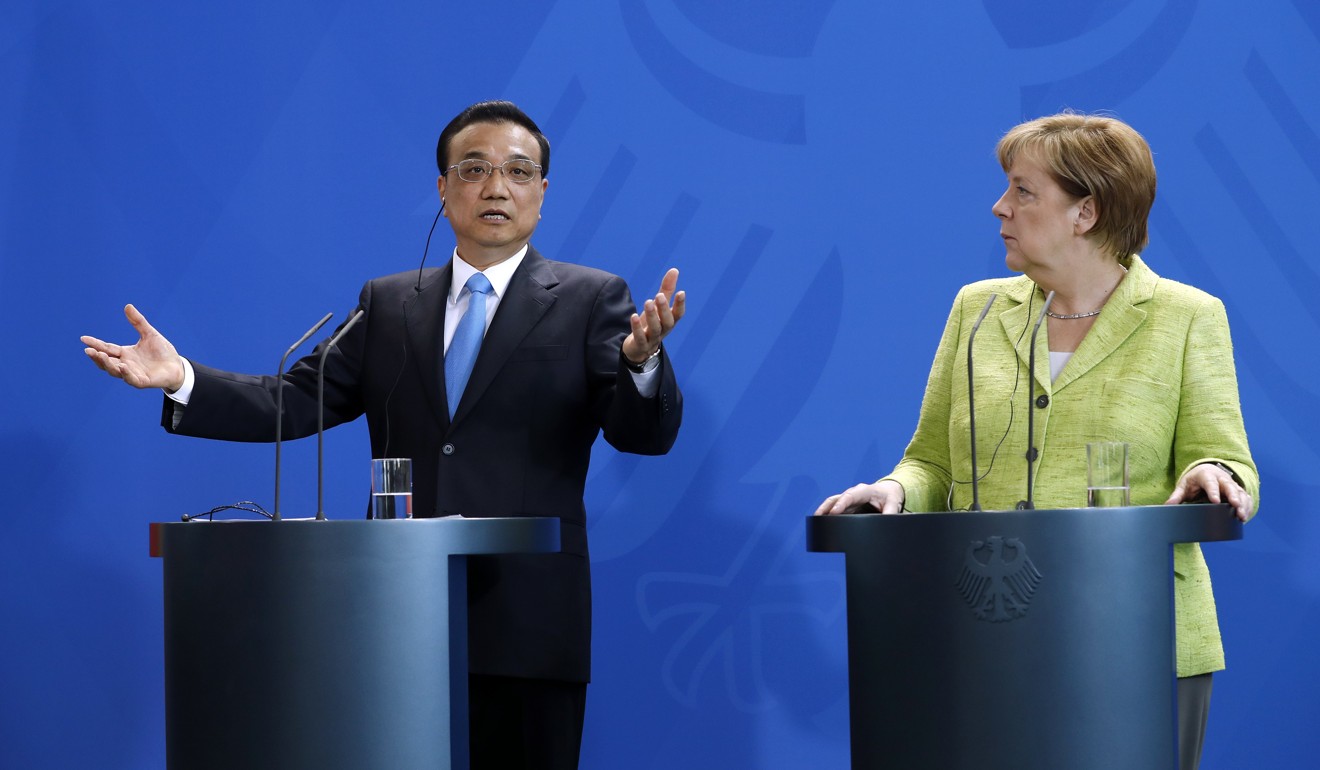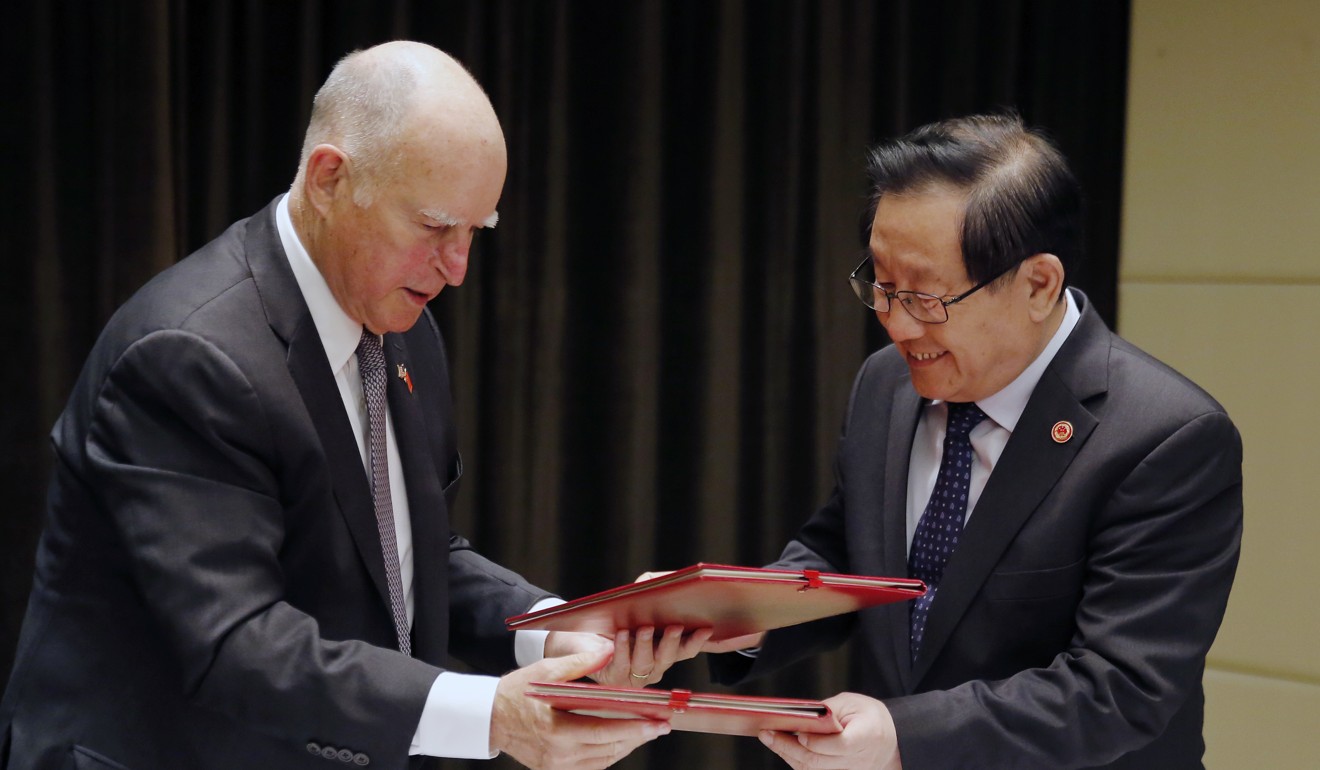
China can lead the climate change battle, but it needs the world on its side
Li Shuo and Tom Baxter say China is well-placed to fill the vacuum left by Trump’s America in tackling climate change, but it must ensure investments in developing economies are directed towards clean energy and win the support of the global community

In response, China was keen to reaffirm its pledge to the Paris deal: Trump’s jump into isolation seemed to give Beijing one more reason to march forward in its emerging climate leadership role.
How did China, so often synonymous with pollution and environmental disaster, get here? And what must it do next?
How did China, so often synonymous with pollution and environmental disaster, get here?
Trump’s decision has left an enormous vacuum in climate politics. As the world’s second-largest emitter of greenhouse gases – contributing 18 per cent – the US will now sit outside the global climate consensus. Its significant diplomatic clout in pushing for strong global action will also now be absent from future climate talks.
Watch: Anger in the US at Trump’s withdrawal from Paris accord
But just as no one in 2009 could have imagined the role China would play years later in Paris, so in 2015 no one could have imagined that China would step up to global climate leadership.
China watchers have long labelled the country as “leadership allergic”. But this is precisely what we saw last week.

Looking back at how China’s stance on climate change shifted
China’s transformation from climate bad boy to climate leader has been just as total as Trump’s isolation of the US – joining just two other nations that have rejected the agreement. One, Nicaragua, refused to sign up, protesting that it was not ambitious enough!
But the world of diplomacy is dominated by words and posturing. What about the reality on the ground in China? How are China’s words manifesting as action?
Carbon emissions from China’s energy sector have already entered their fourth year of zero or negative growth
As the world’s largest carbon dioxide emitter, with an economy highly reliant on heavy industry and an energy sector still more than 60 per cent dependent on smog-producing coal, China does not often seem to be the paradigm of global climate leadership. However, the winds of change have come fast and strong.
For one, installations of wind and solar power have exploded in recent years. All of last year, solar panels were installed at a rate of three football pitches every hour in China. Meanwhile, coal’s dominance is slipping, with consumption stalling for three years in a row.
With that trend expected to continue, and wind and solar investments forecast to expand fivefold by 2030, China is on course to rapidly reduce emissions over the coming decades. In fact, statistics from China’s National Energy Administration suggest that carbon emissions from the energy sector have already entered their fourth year of zero or negative growth.
With US out of Paris climate deal, China is now able to lead
The government’s master plan to move the economy away from heavy industry such as cement and steel, though far from a smooth journey, will contribute to a fall in emissions. The plan also demonstrates China’s commitment to follow through on diplomatic rhetoric with ambitious action.

When it comes to clean energy, China is leading the race
All this means that China is in an optimum position to take a lead on climate change and to even expand its ambition.
One concern is China’s expanding and not-always-clean investments abroad, including coal projects
Reasons for caution do exist, however. One major area of concern is China’s expanding and not-always-clean investments abroad, including coal projects, along the much touted “New Silk Road” and the “Belt and Road”.
Trump’s walking away from emission reduction commitments leaves a vacuum that cannot be filled by just one or two large countries. It requires the action of all countries, cities and businesses.
For this reason, it is crucial that China’s investments abroad are directed towards clean energy and infrastructure projects, and do not lock developing countries into carbon-intensive growth paths.
China’s leadership on tackling global warming has great potential to carry forward climate politics without Trump’s America. Actions must now follow words.
At the same time, smaller countries, businesses and cities all have a role to play in filling the vacuum of climate action left in the wake of Trump’s isolationist move. And we too, as citizens of this fragile planet, must continue to push for ever more ambitious climate action. The Earth needs it more than ever.
Li Shuo is a senior policy adviser on climate at Greenpeace East Asia, where Tom Baxter is a communications officer

